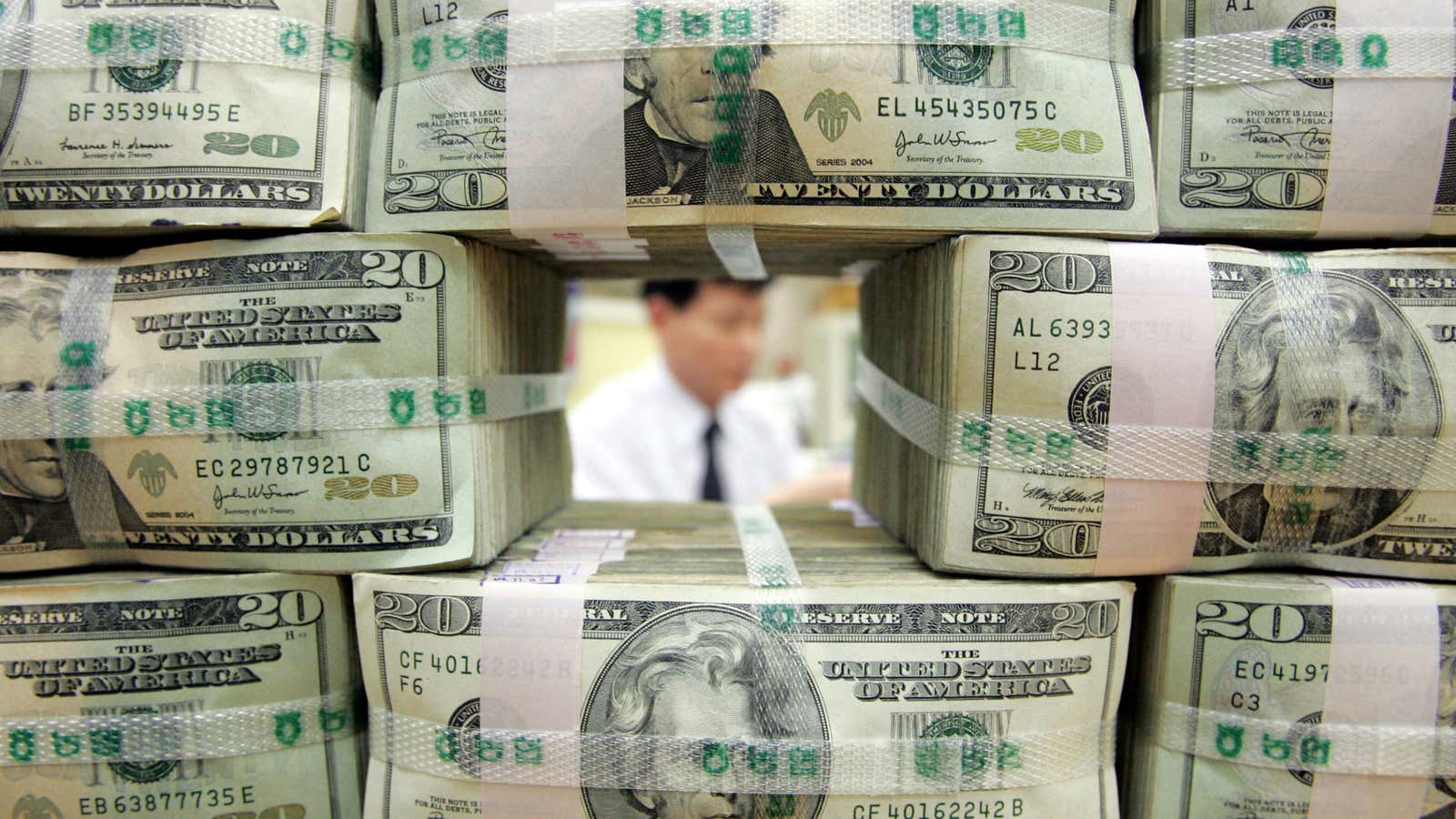Wayne Kinkel thought he was out of luck when his golden retriever decided that a stack of five $100 bills was a more enticing meal than what was in the dog bowl. “He’s been notorious for eating paper products,” said the Montana-based graphic designer. “I knew right away what had happened.”
But this week, after months of waiting—and a pretty foul application of his graphic design skills—Kinkel got a $500 check from the US Department of Treasury replacing his lost greenbacks.
The incident happened in December. Kinkel spent the next few months collecting and storing his dog’s feces. His material ambitions ultimately won out over hesitations, and Kinkel decided to use a wire screen and a hose to sift out the bits of the remaining bills. From there, he managed to reassemble most of the bills, “sort of like putting the puzzle pieces back together,” he said.
Then he sent the reconstructed bills off to Washington DC, and the Mutilated Currency Division of the Bureau of Engraving and Printing at the U.S. Treasury. A few months later, he received a check in the mail.
The Mutilated Currency Division is a last-resort facility for damaged currency. Though the numbers vary from year to year, in 2010 the department said it fielded about 20,000 cases, with a success rate of 90%, and send an estimated $40 million back to consumers. The division works to replace cash that consumers lost in fires, floods, shredders, and the occasional dog belly.
In fact, Kinkel’s story is hardly unique. ”[A farmer] had his money stashed in the hay in the barn and the cow ate it and he needed to get the money out of the cow instead of through the cow,” Len Olijar, deputy director of the Bureau of Engraving and Printing, told the Chicago Tribune in 2009, which reported that the cow ate several thousand dollars. In that case, the division helped the farmer sort out the bills, partly so that it would be able to tell the story later.
To receive a reimbursement for digested bills, a claimant has to be able to recover 51% of each original note or else prove that, based on the evidence presented, more than half the bill had been destroyed. There’s no limit on the money that can be redeemed; in 1978, the owner of an armored car that exploded received $2.5 million check.
